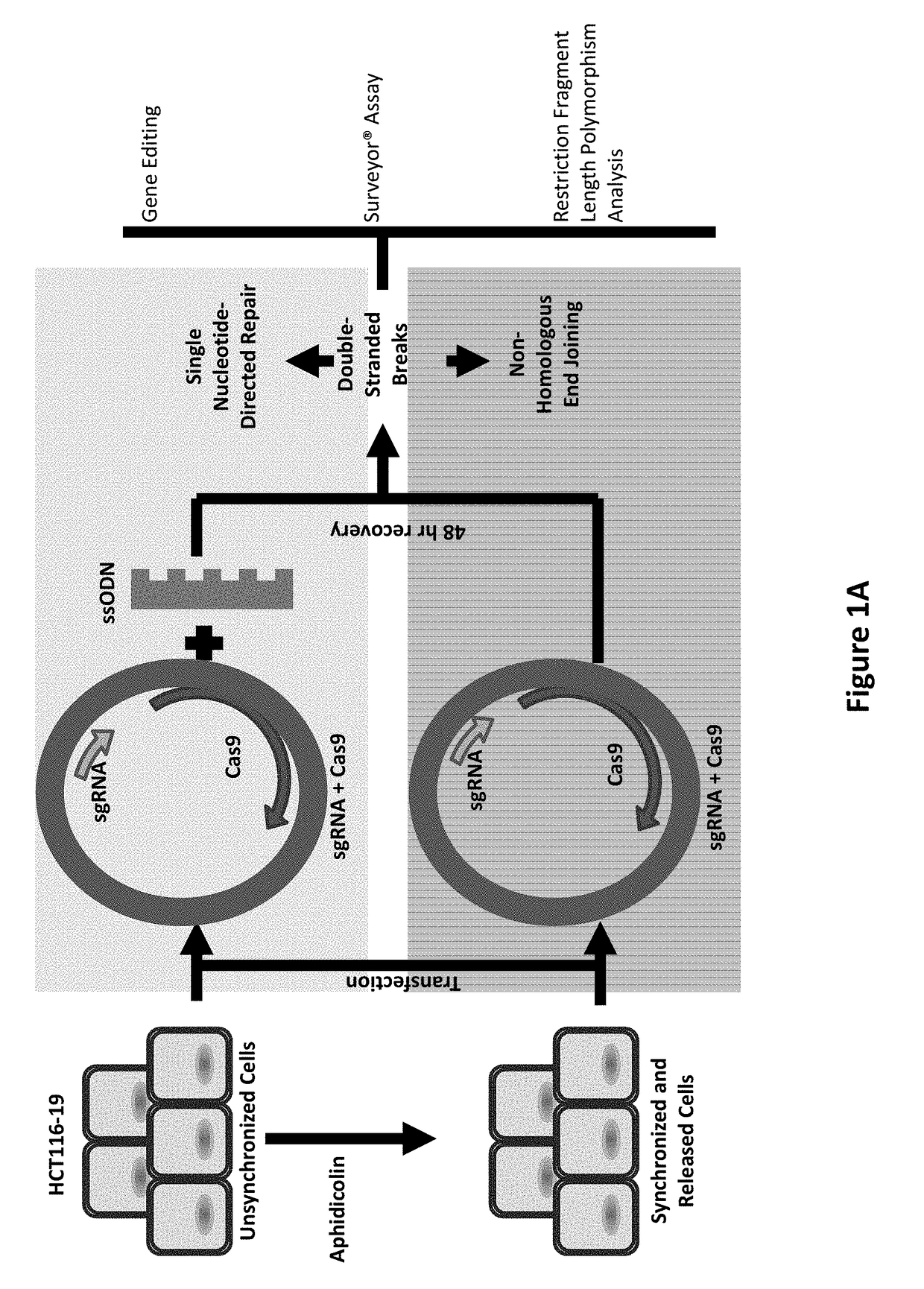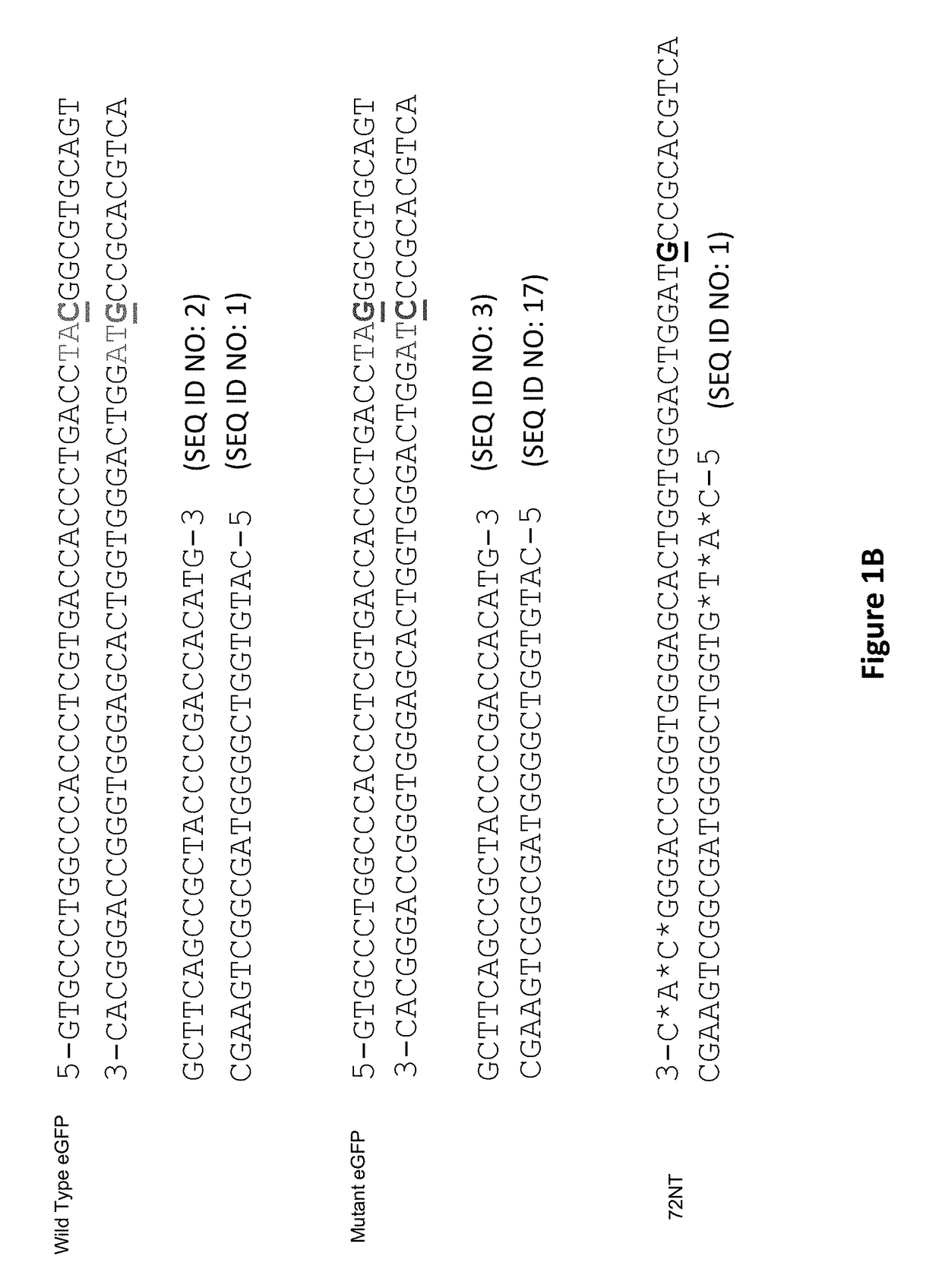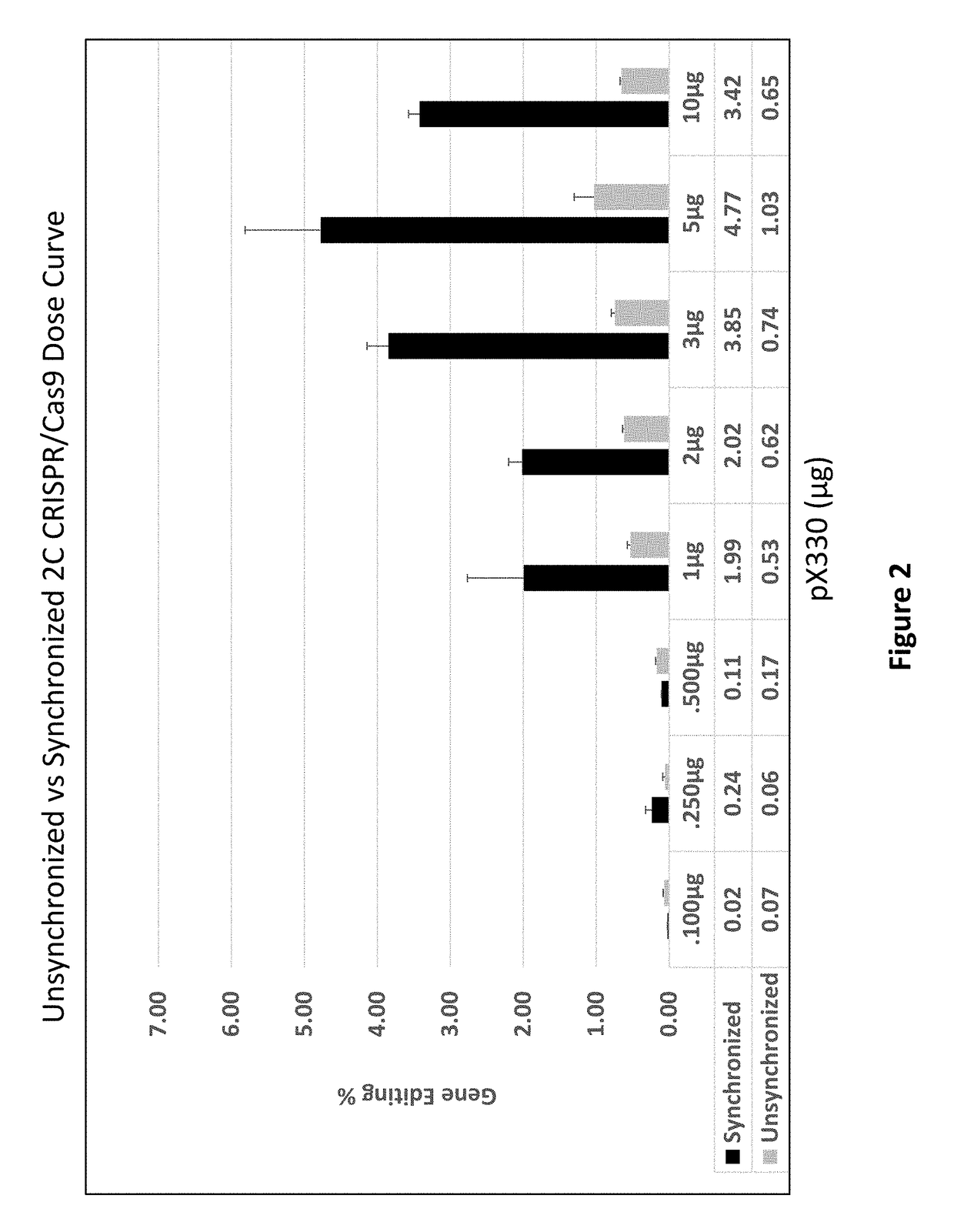Compositions and Methods for Improving Homogeneity of DNA Generated Using a CRISPR/Cas9 Cleavage System
a technology of dna and cleavage system, which is applied in the direction of dna preparation, other foreign material introduction process, hydrolase, etc., can solve the problems of low efficiency of homology-directed repair (hdr) pathway, inability to provide optimal gene therapy approach, and inability to re-inject precise genetic modifications
- Summary
- Abstract
- Description
- Claims
- Application Information
AI Technical Summary
Benefits of technology
Problems solved by technology
Method used
Image
Examples
experimental examples
[0107]The invention is further described in detail by reference to the following experimental examples. These examples are provided for purposes of illustration only, and are not intended to be limiting unless otherwise specified. Thus, the invention should in no way be construed as being limited to the following examples, but rather, should be construed to encompass any and all variations which become evident as a result of the teaching provided herein.
[0108]Without further description, it is believed that one of ordinary skill in the art can, using the preceding description and the following illustrative examples, make and utilize the compounds of the present invention and practice the claimed methods. The following working examples therefore, specifically point out the preferred embodiments of the present invention, and are not to be construed as limiting in any way the remainder of the disclosure.
example 1
Homogeneity of DNA Generated Using a CRISPR / Cas9 Cleavage System
[0109]The materials and methods employed in these experiments are now described.
[0110]CRISPR / Cas9. Synchronized HCT116-19 cells were electroporated with an increasing dose of a plasmid containing a CRISPR / Cas9 expression construct targeting the mutant eGFP gene, as well as an increasing dose of the same construct with a 72 mer ssODN complementary to the eGFP gene with a single mismatch at the mutant eGFP base. Forty-eight hours after electroporation, the samples were analyzed via FACS, restriction fragment length polymorphism analysis (RFLP), and SURVEYOR MUTATION DETECTION® kits (Integrated DNA Technologies).
[0111]Restriction Fragment Length Polymorphism Analysis.
[0112]An AvrII restriction site located around the mutant base of the eGFP gene served as a read out of Cas9 induced DNA damage. When Cas9 cleaves the target site and gets repaired via non-homologous end joining, base pairs can be lost, resulting in destructio...
example 2
al Mutagenesis by CRISPR / Cas9 Ribonucleoprotein Gene Editing in Cells Targeted for Point Mutation Repair Directed by Short Single-Stranded DNA Oligonucleotides
[0142]Single-stranded DNA oligonucleotides (ssODNs) can act as templates for the repair of point mutations in human cells. These molecules direct nucleotide exchange at precise positions and without detectable off target effects. While there is great utility in single agent gene editing, the frequency with which single base repair takes place has been consistently lower than needed for long-term development. The mechanism and regulation of single agent gene editing, however, has been elucidated and based on these studies two important enhancers of the frequency have been uncovered. The first involves double strand DNA breakage induced by the activity of anticancer drugs such as Camptothecin or VP16, etc in a process that leads to the activation of pathways involved in DNA damage response. The second method of increasing the fr...
PUM
| Property | Measurement | Unit |
|---|---|---|
| length | aaaaa | aaaaa |
| restriction fragment length polymorphism analysis | aaaaa | aaaaa |
| concentration | aaaaa | aaaaa |
Abstract
Description
Claims
Application Information
 Login to View More
Login to View More - R&D
- Intellectual Property
- Life Sciences
- Materials
- Tech Scout
- Unparalleled Data Quality
- Higher Quality Content
- 60% Fewer Hallucinations
Browse by: Latest US Patents, China's latest patents, Technical Efficacy Thesaurus, Application Domain, Technology Topic, Popular Technical Reports.
© 2025 PatSnap. All rights reserved.Legal|Privacy policy|Modern Slavery Act Transparency Statement|Sitemap|About US| Contact US: help@patsnap.com



